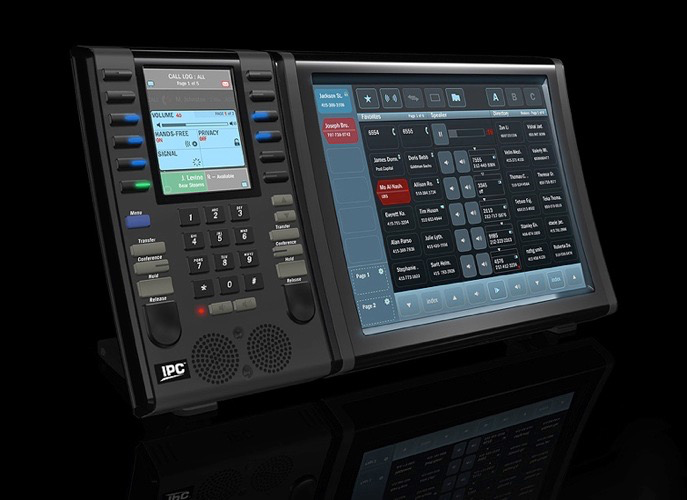The Project
How do you make a complicated phone system desirable and easy to use?
When IPC came to frog design in 2005, they were technological innovators who already owned 60% of their market, specialized phones for financial traders known as turrets. Given the five year hardware redesign cycle for their product, they wanted to ensure that their success would not be overtaken by market change. We brought a user-centered process to both the industrial and interaction design in order to create a product traders would want to use, and ended up creating an entire platform.
The Process
Before and after
IPC’s previous turret, the IQMX, used small black and white screens and two-color LEDs. The interaction design was confusing, and user research confirmed that most traders didn’t understand the turrets’ capabilities. The IQ/MAX is designed to be easy to use and understand, and it is built to fit into a trader’s cramped environment.
Joint industrial/digital user research on trading floors allowed us to understand the specific needs of this audience — for example, the legs of the IQ/MAX are high enough that the thick cable for the traders’ highly-valued Bloomberg terminals can slide underneath it.
The industrial design and the interaction design of the IQ/MAX work together to create a highly structured and predictable system. The system is modular and reconfigurable to fit particular communication and space needs.
IPC can provide a lot of information about incoming and active calls: when a deal might hinge on who says yes first, the phone has to be picked up quickly.
Using shape, color, fill, and animation, our team created a semantic for active calls that was easy to learn and comprehensible in a single glance at the screen.
We knew we had it right when, in usability testing near the end of the project, a trader stopped talking mid-sentence when she saw a high-priority call coming in on her simulation. “Oh!” she said, “Sorry, I need to get this!”
The design system is highly extensible and adaptable - my team created a touchscreen concept unit for the IQ/MAX launch event in six weeks, including fabrication.
The first follow-on product to launch was MaxAccess 1000: a Flash-based web app designed for remote access and disaster recovery situations. We also created a design language to be used in internal tools for IPC system administrators.
In 2010, I led a multi-workstream project that revisited the IQ/MAX to add new features and functionality.
We also created a fully-featured desktop application that can be used with or without a turret. Building on new models for search, alerts, and online communication that didn't exist when the first project began, the new products, launched under the Unigy brand, take IPC's customer seamlessly into the next era of digital communication.
The Outcomes:
For IQ/MAX:
- 65% adoption rate in the first year, compared to a typical 10%
- $36 million in revenue in the first quarter on a product that cost $10 million to develop
- 100% success rate in pitches with clients in the Americas during first year
- Continued adoption by customers worldwide
Other Products:
- MAXaccess 1000 named 2008 Product of the Year by Unified Communications, and won an Excellence Award from Internet Telephony (both trade publications)
- IPC named Best Trading Floor Communication System Provider, 2010, by Waters Technology Rankings
- Next-generation work launched as three separate products under the Unigy umbrella name in 2011; sales exceeded expectations
My Role:
- Digital design lead on the IQ/MAX project; overall lead on further client engagements
- User research planning and coordination, and usability testing and synthesis
- Coordination with freelancers, third-party vendors, and client stakeholders
- Detailed wireframes and specification documentation for client technical teams, as well as higher-level style guides for product managers
- Creating a culture of collaboration across multiple disciplines and project workstreams
